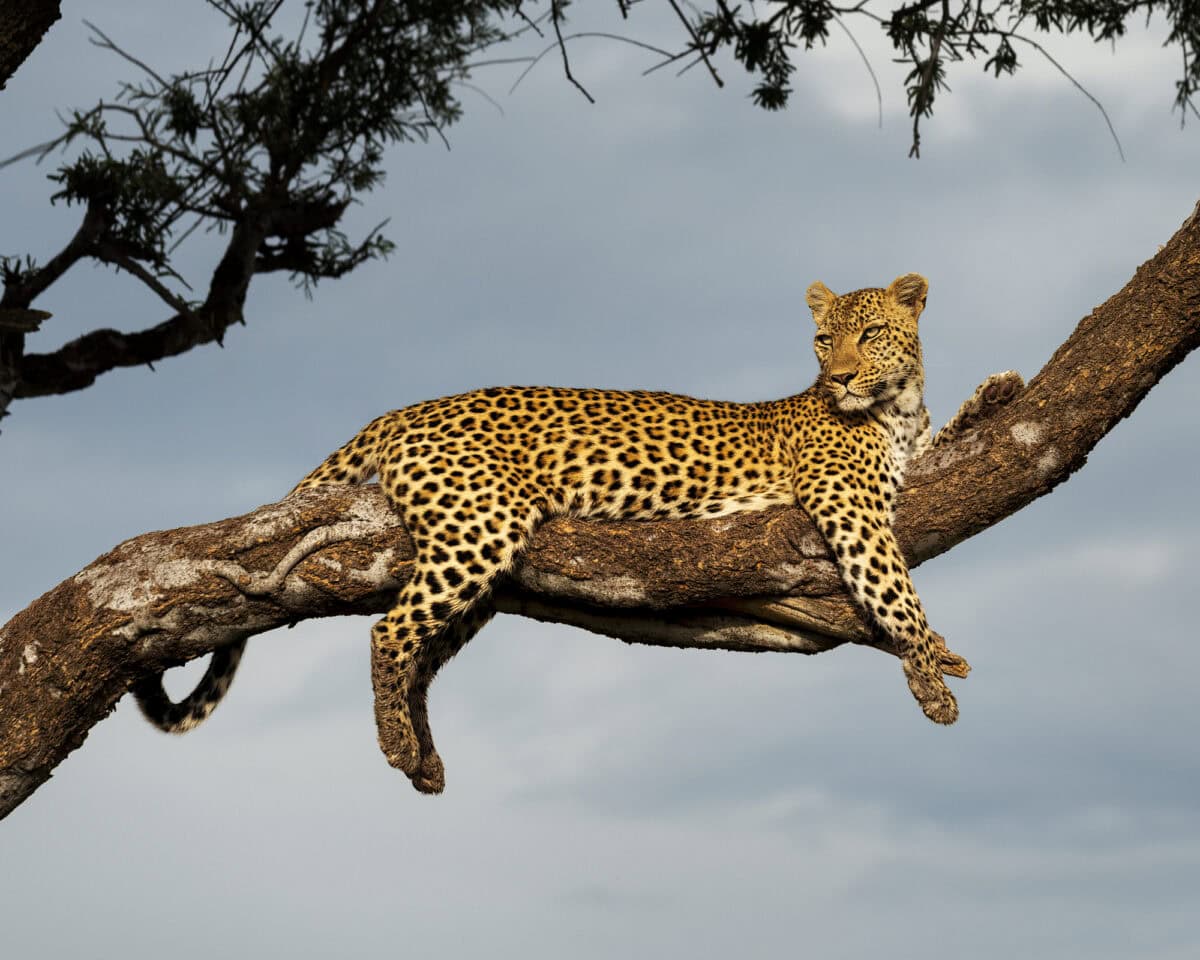One of our partners, Matthew Grosset, captured this incredible video of the extraordinary climbing abilities of a Leopard in the Kruger National Park, South Africa. Not only are leopards beautiful but as we can see, agile as well!
Big Cats
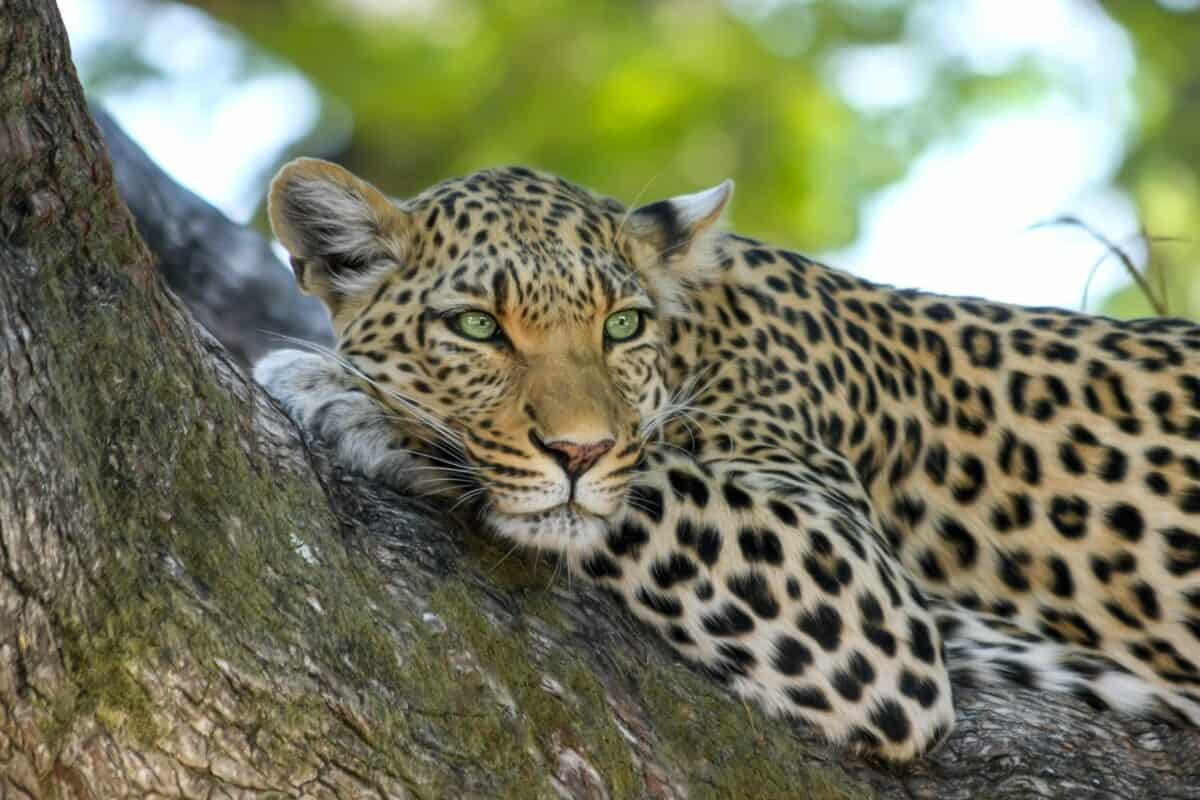
If you’ve followed some of my other articles, you know how much I love big cats! This group consists of the 5 apex predators of the Panthera genus, namely the lion, tiger, snow leopard, jaguar, and of course the leopard. However, here at AATG we also consider the cheetah and cougar from the subfamily Felinae, as big cats.
Leopard Characteristics
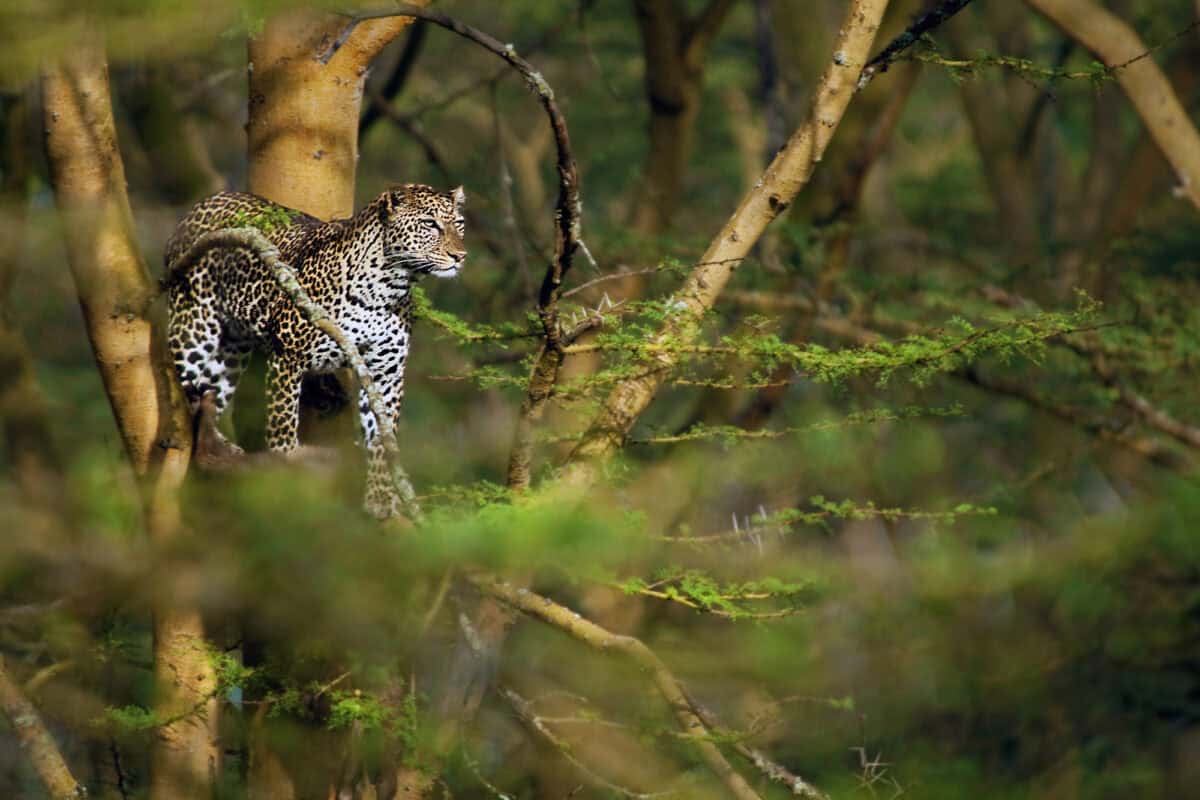
These apex predators share many characteristics with the other big cat species, such as their strong and agile bodies, keen senses, and sharp teeth and claws. Leopards are carnivores that hunt various mammals that share their habitat and tend to lead solitary lives. These big cats also breed year-round and can roar.
Some Leopard Facts
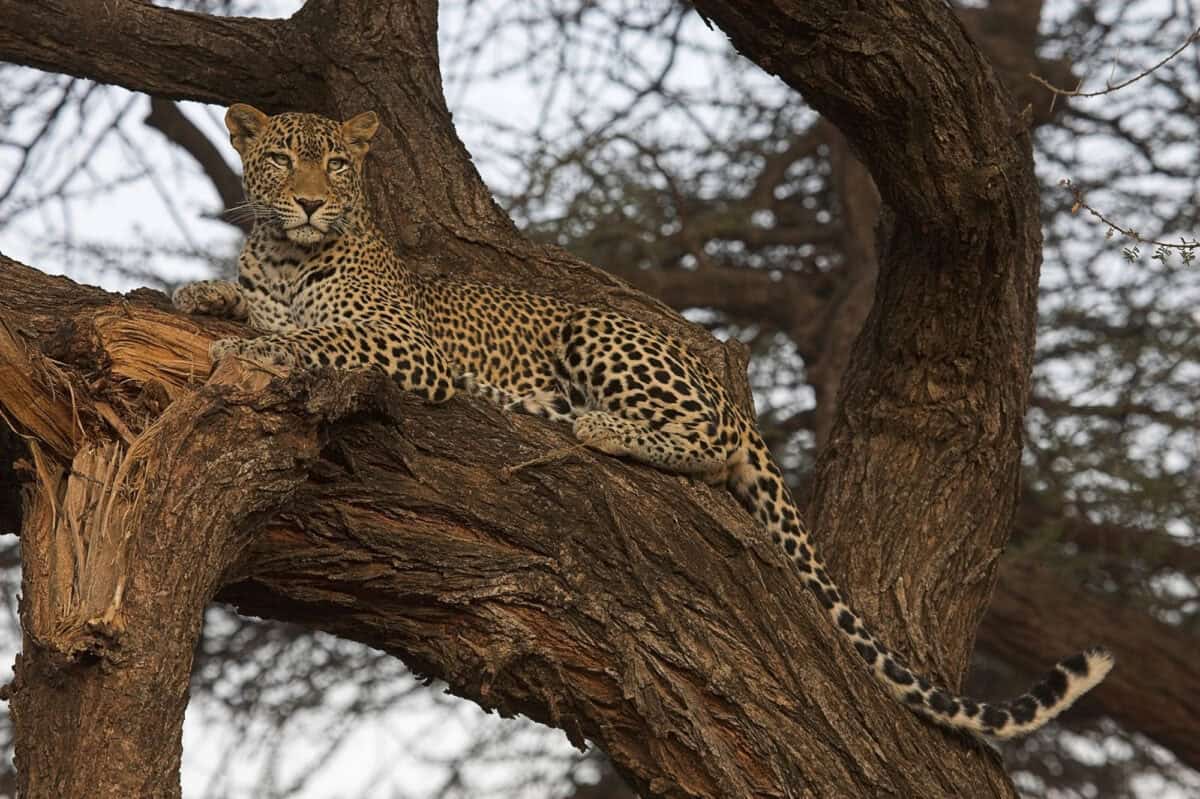
| Scientific Name | Panthera pardus |
| Size | 10 feet long |
| Weight | 110 to 200 pounds |
| Speed | 36 mph |
| Habitat | Forests, savannahs, grasslands, deserts, arid and semi-arid regions |
| Conservation status | Vulnerable according to the IUCN Red List |
Why Do Leopards Climb Up Trees?
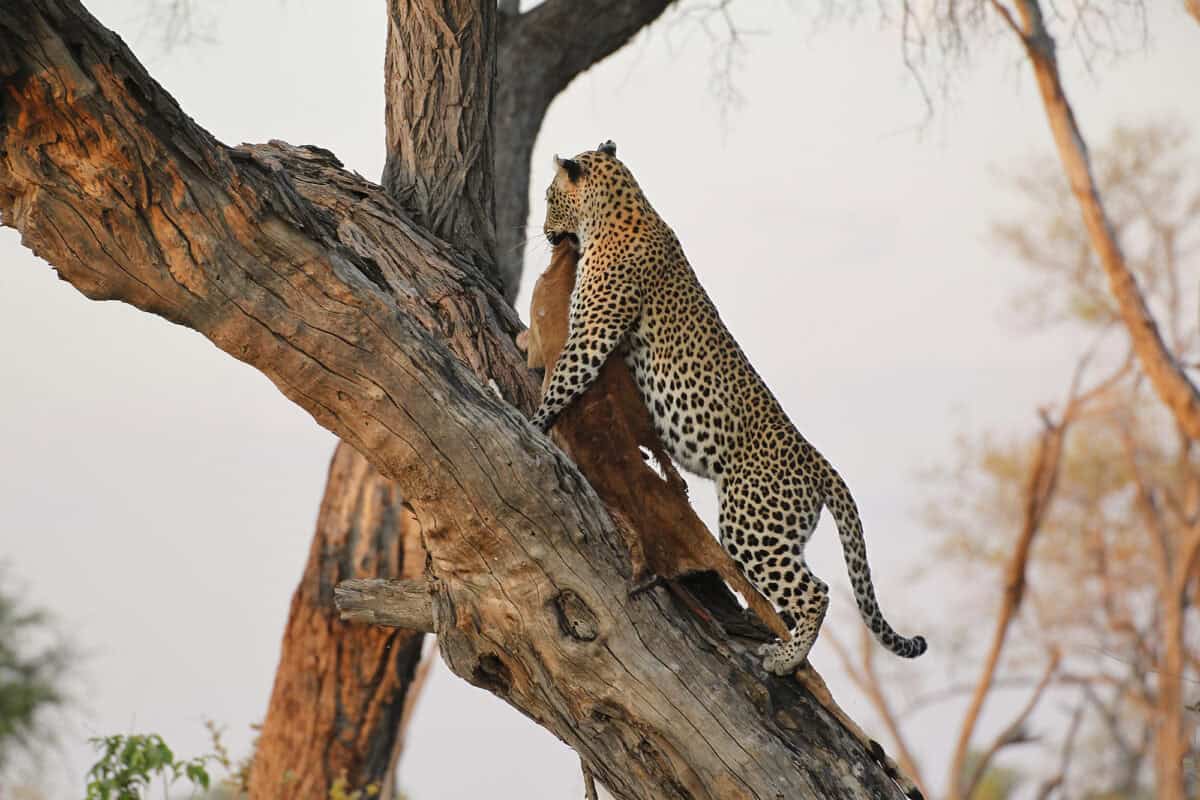
You often see a leopard high up in a tree, but why do they do this? Maybe for some peace! Leopards pull their prey up in trees to avoid scavengers, like hyenas, or other hunters, like lions, from getting to their kill. They also use the safety of trees to rest away from potential danger.
Leopards Climbing Abilities
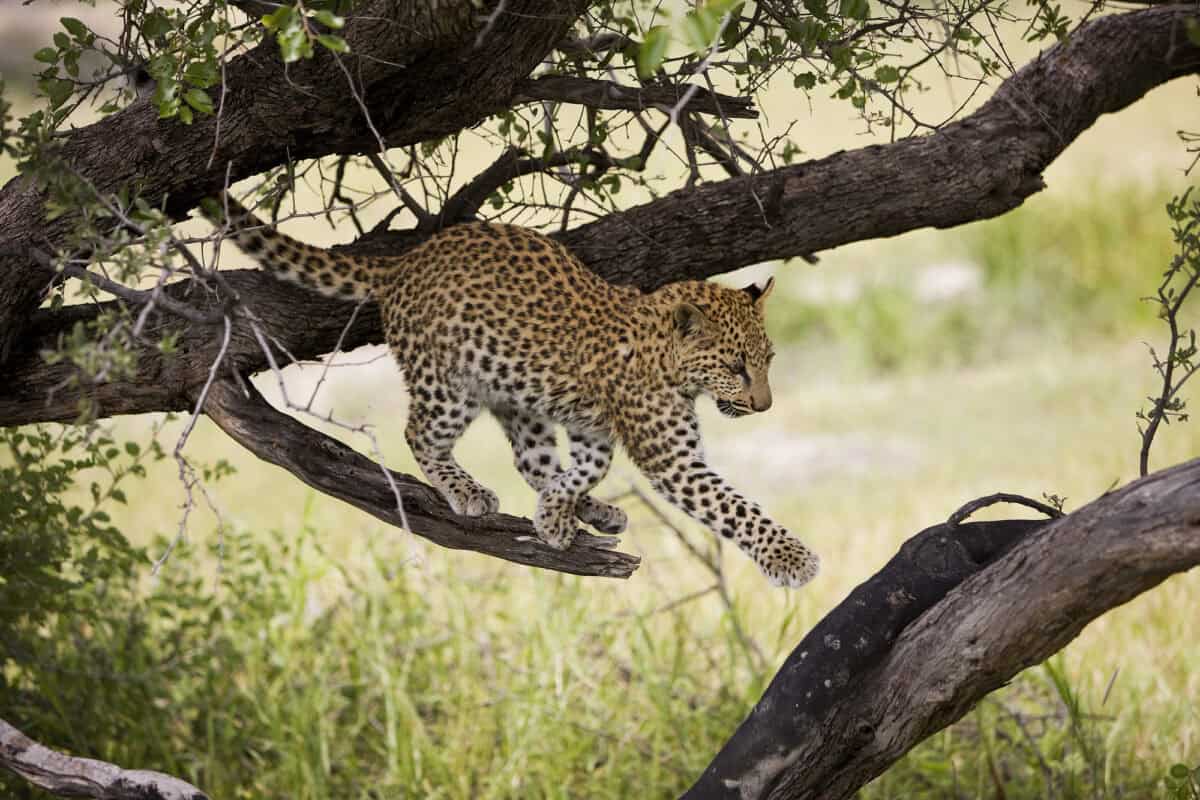
Leopards have incredibly strong shoulders and front limbs, making pulling themselves up steep trees a breeze. They also weigh less than, let’s say a lion, allowing them to climb easier. Their low center of gravity and high power-to-weight ratio let them move easily up and down trees. Oh, and of course their sharp claws help them grip tree trunks!
The Video

The Astonishing Strength of the Leopard’s Jaws
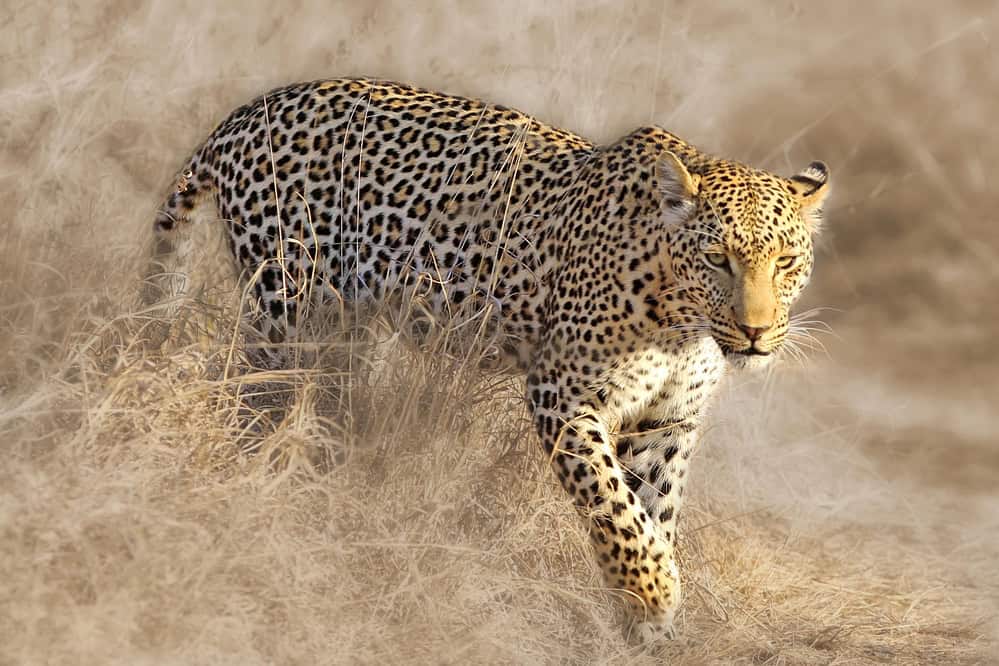
Leopards possess an incredible bite force, allowing them to take down prey much larger than themselves. This extraordinary strength is a key survival trait, allowing them to tackle a variety of animals in their diverse habitats. Whether it’s a swift gazelle or a bulky wildebeest, a leopard’s jaws are designed to deliver a lethal bite.
Nighttime Stealth

As nocturnal hunters, leopards thrive in the darkness, using their exceptional night vision to track and ambush prey. Their ability to move silently through dense foliage and rugged terrain makes them formidable predators under the cover of night. This stealthy approach ensures they remain unseen until it’s too late for their unsuspecting victims.
The Versatile Diet of a Top Predator
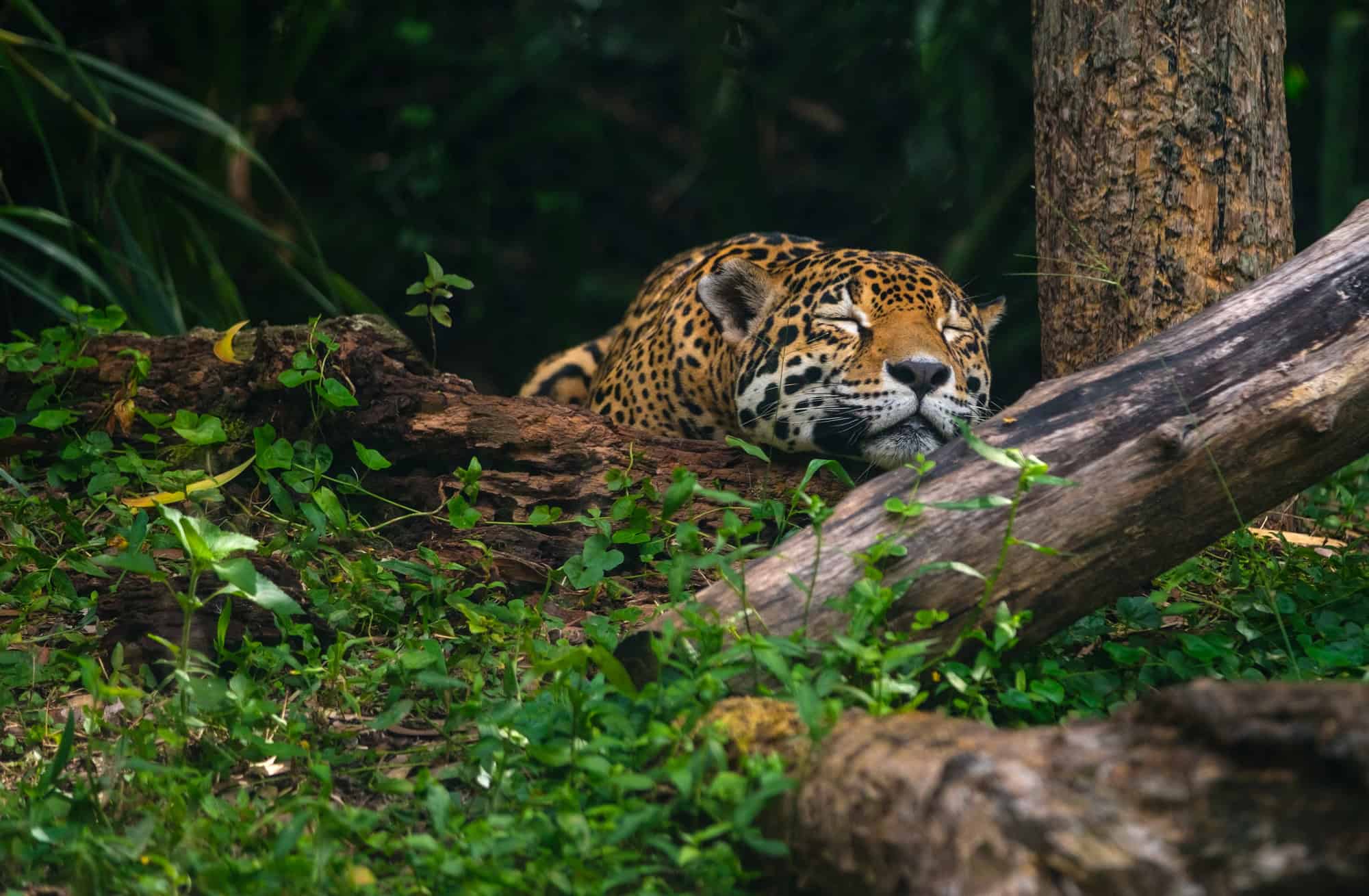
Leopards are highly adaptable when it comes to their diet, consuming anything from insects to large mammals. This versatility ensures their survival in diverse environments, from arid savannas to lush rainforests. Their opportunistic feeding habits highlight their remarkable adaptability and resourcefulness in the wild.
Climbing Masters

Leopards are unparalleled climbers, effortlessly scaling trees to escape danger or stash their kills away from scavengers. This arboreal skill set not only aids in their survival but also demonstrates their incredible physical prowess. Observing a leopard navigating the canopy is a testament to their agility and strength.
Camouflage

The leopard’s distinctive rosette-patterned coat provides excellent camouflage, allowing it to blend seamlessly into its surroundings. This natural disguise is essential for stalking prey and avoiding detection by potential threats. Their ability to remain hidden in plain sight is a crucial aspect of their hunting strategy.
Territorial Markings

Leopards are solitary animals, and they use scent markings to communicate with others and establish territories. By leaving urine, feces, and glandular secretions, they convey information about their presence, reproductive status, and boundaries. This olfactory communication is vital for maintaining social structure and reducing conflicts among individuals.
Final Say On Leopards Climbing Abilities
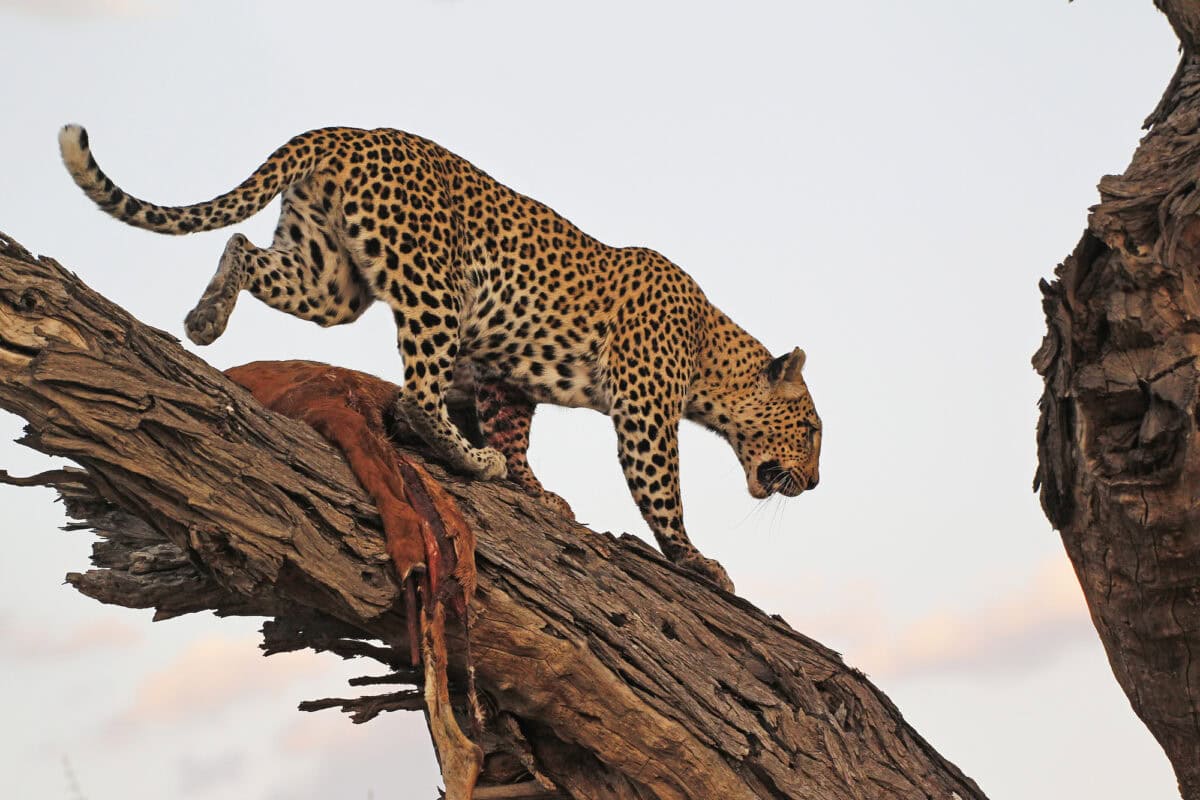
This video shows us a leopard in the Kruger National Park gracefully moving up and down a tree. Displaying its combination of agility, strength, and instincts beautifully. And even though leopards are one of the smaller big cats, they have exceptional climbing skills.
Next in Animal News
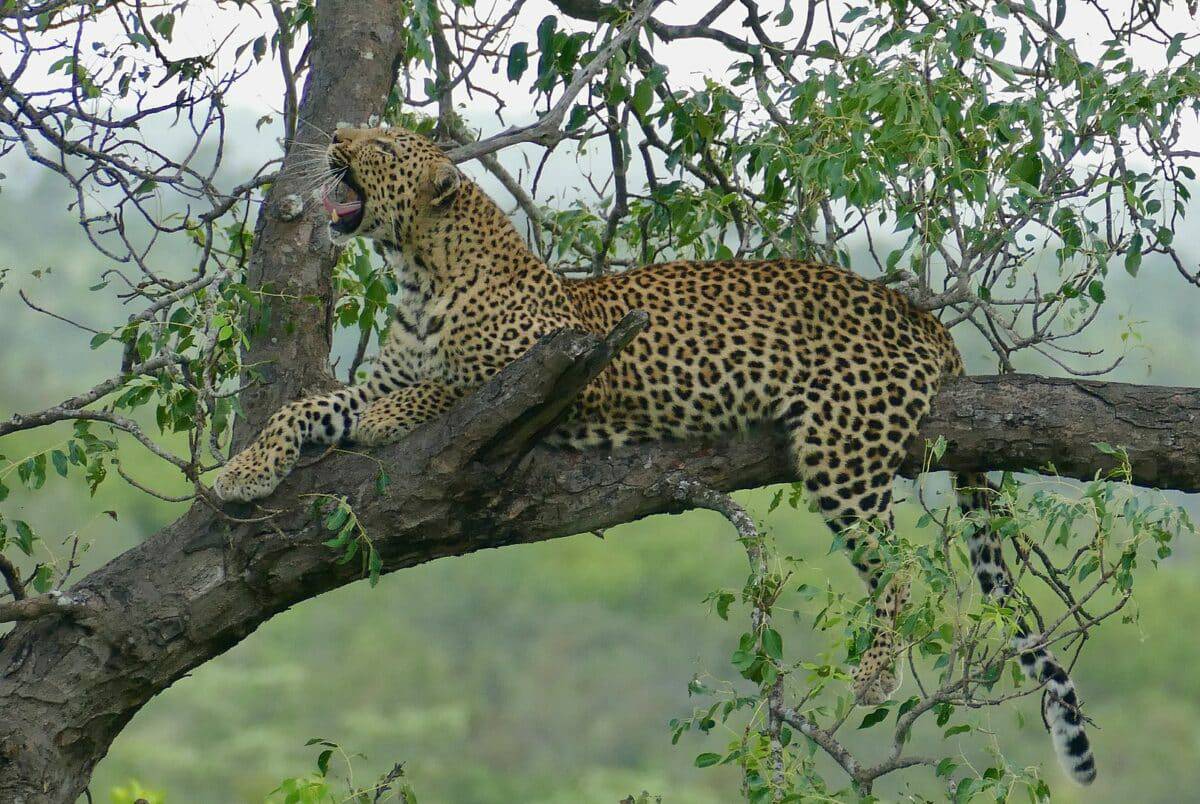
If you enjoyed this article on the extraordinary climbing abilities of leopards, why not head over to our Big Cats page to learn more about these animals? Or have a look at these articles:
- White Rhinos vs Hyena Caught on Camera
- Watch: The Mighty Lion’s ROAR
- Rare Footage of Leopard and Hyena Eating Side by Side
- Have You Ever Seen A Leopard Fall Asleep?
Join our Forum for free today!

- Marine Mammals in the Military - June 25, 2024
- Fishermen Save 38 Dogs From Drowning in Mississippi - June 24, 2024
- White Rhinos vs Hyena Caught on Camera - June 23, 2024

